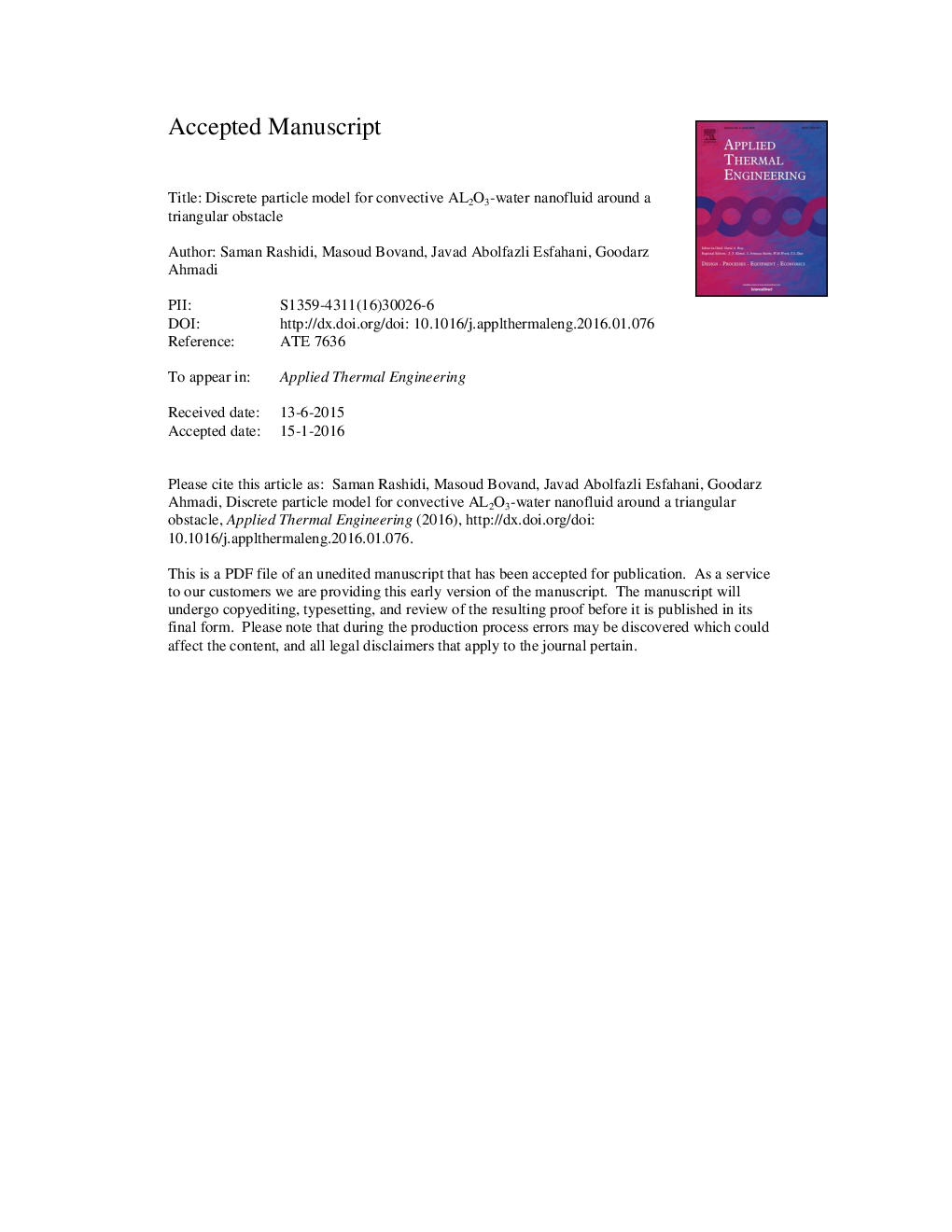| Article ID | Journal | Published Year | Pages | File Type |
|---|---|---|---|---|
| 644844 | Applied Thermal Engineering | 2016 | 48 Pages |
Abstract
In this paper, the discrete particle model was used to determine the concentration distribution and particle trajectories in a nanofluid flowing around a triangular obstacle. Furthermore, the local and average Nusselt numbers and the phase diagrams of drag and lift coefficients were evaluated and discussed. Simulations were performed for two orientations of the triangular obstacle (side and vertex facing flows) and two different boundary conditions of reflect and trap for particle phase at the obstacle walls. Two-dimensional unsteady conservation laws of mass, momentum, and energy along with the equation of nanoparticle motion were used in the analysis. Numerical simulations of fluid flow and nanoparticle motions were conducted using the finite volume and trajectory analysis approaches. The simulation and model in this manuscript are developed using the commercial software Ansys-Fluent. The results were presented for a range of Reynolds number from 50 to 200 and for particle volume fractions (concentrations) from 0% to 5%. Finally, the predictions of the present discrete particle model are compared with those of the earlier effective single phase model. Comparison of the simulation results with the available experimental data revealed that the discrete particle model was more accurate than the effective single phase approach. The present discrete phase model showed that particle concentration near the walls was not uniform. In fact, the concentration dropped sharply at a thin boundary layer near the absorbing walls, while for reflecting wall the concentration increased slightly.
Related Topics
Physical Sciences and Engineering
Chemical Engineering
Fluid Flow and Transfer Processes
Authors
Saman Rashidi, Masoud Bovand, Javad Abolfazli Esfahani, Goodarz Ahmadi,
